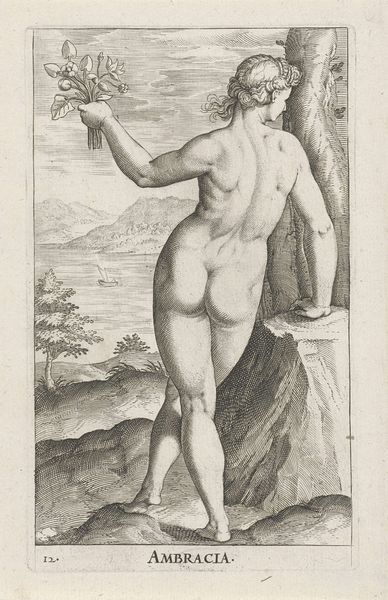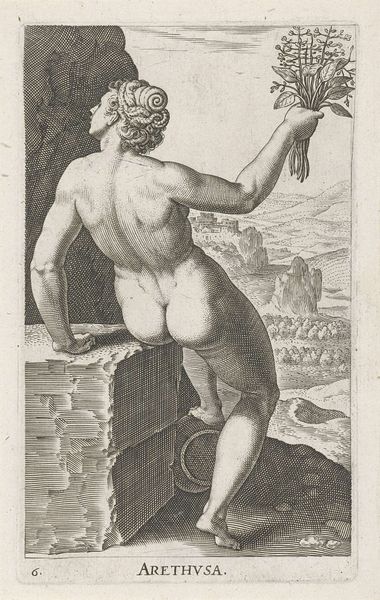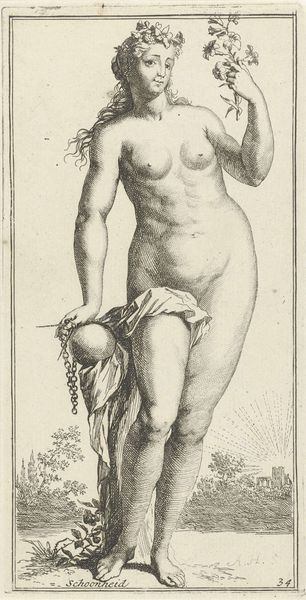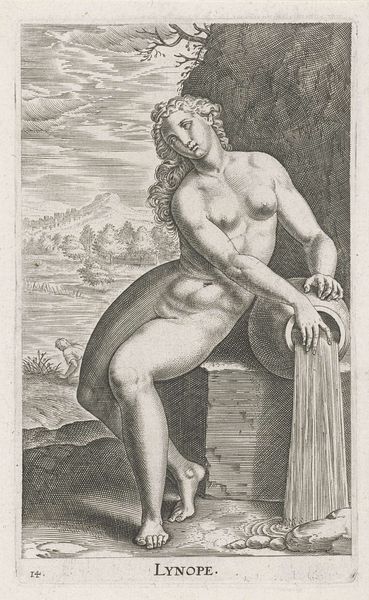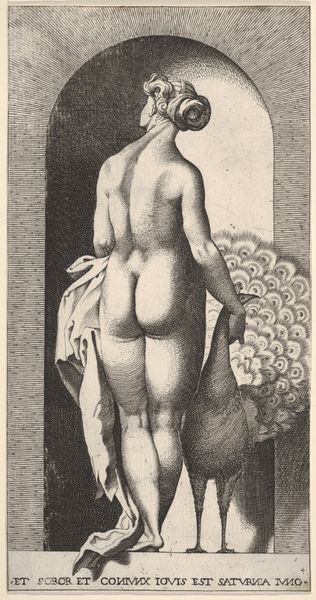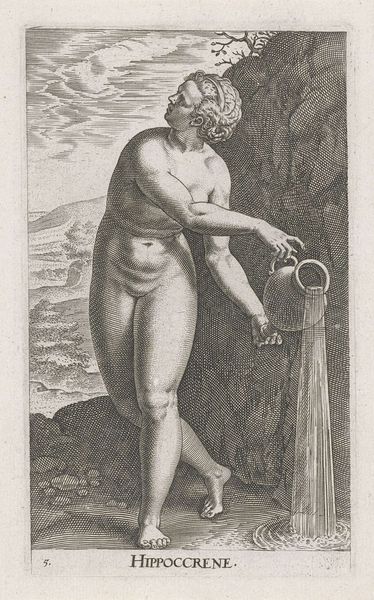
engraving
#
landscape
#
mannerism
#
history-painting
#
nude
#
engraving
Dimensions: height 165 mm, width 101 mm
Copyright: Rijks Museum: Open Domain
Curator: Well, isn't this an evocative piece. At first glance, there’s something so... exposed about this figure. Vulnerable, maybe? Editor: Indeed. This engraving, titled "Waternimf Camerina," was created in 1587 by Philips Galle. It currently resides here at the Rijksmuseum. It exemplifies Mannerist aesthetics. Looking at the quality of the line work really calls attention to the technical mastery of engraving as a medium, wouldn’t you say? Curator: Absolutely. It’s quite impressive how much detail he manages to convey through these very fine lines. The process demands an almost superhuman level of precision and control over the materials. Yet I'm thinking about the nude female figure, which historically serves patriarchal dominance by displaying a silent and subservient body, robbed of agency and voice. Is that reading into this a little much? Editor: Not at all. It is definitely part of its historical moment, the artistic tradition this piece emerges from demands such analysis. Note how Camerina, based on an Ancient Roman story, reclines, gazing wistfully towards the horizon—almost as if she is imprisoned within the landscape. Her passivity mirrors a society where women’s power and presence was limited. Her vulnerability almost highlights her displacement and yearning. Curator: Yes. Thinking about Galle’s own role in the piece, did he reflect the status quo or did he actively try to make commentary? This would be difficult to determine. Was the work commissioned and for what purpose? Considering this as commodity, too, complicates a reading of the meaning of the artwork as it was probably widely reproduced. Editor: Those are important considerations! In light of intersectional perspectives, how does a modern audience confront pieces like this one? How can we promote necessary dialogue without inadvertently repeating dangerous histories? Curator: By honestly engaging in uncomfortable conversations. This work demands not only the deconstruction of artistic conventions but also a reassessment of our relationship with works rooted in social disparity. Editor: I completely concur. By contextualizing and critically reflecting upon these types of images, we move toward a future that acknowledges previous injustices, rather than erases them.
Comments
No comments
Be the first to comment and join the conversation on the ultimate creative platform.

